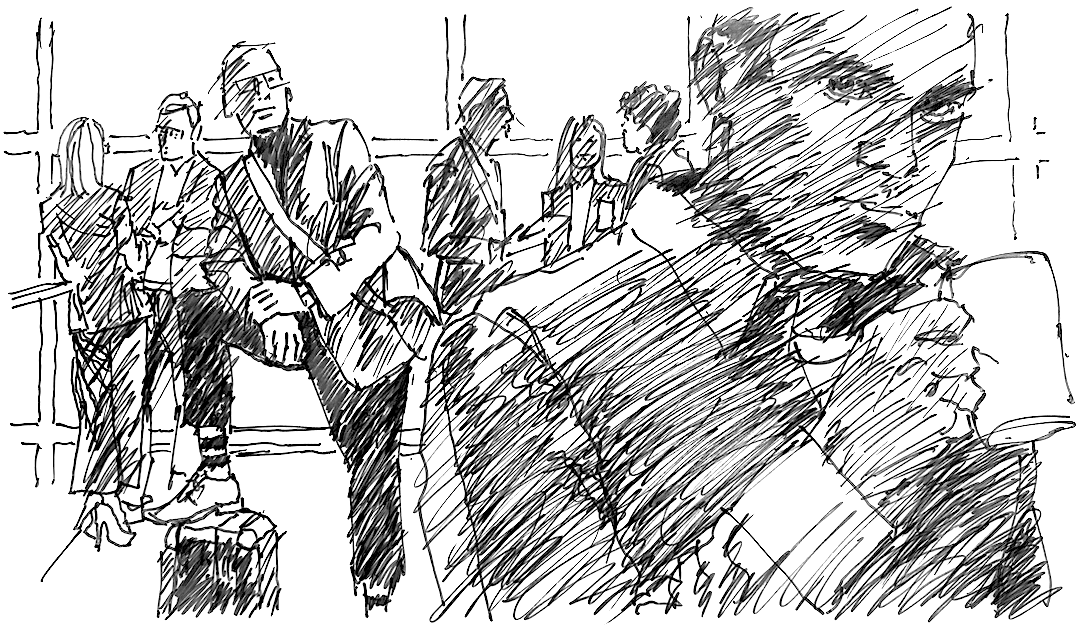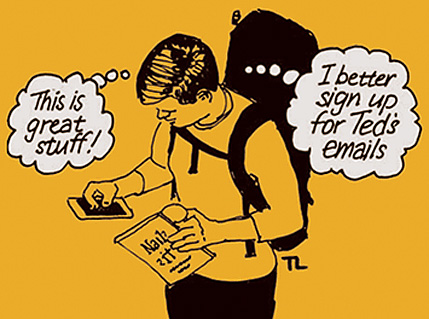Elevating Client Conversations

In a time increasingly dominated by AI, a truly human question hits different. Notice I used ‘different’ not differently. I did so to signal my humanness.
Questions are the best! They get answers, and they bring us closer to each other with the telling.
Here’s a quick example. It’s the midmorning break at a design conference. I’m standing in line for coffee when the guy behind me says:
“How’s your day going?”
“Great, beautiful day.”
“I love those socks! Where’d you get ’em?”
“Oh, thank you! I got them at this new shop that’s…”
Now we have a whole new area to explore, it’s about design, but beyond design at the same time. Starting with socks, we can move to delightful shopping experiences, our choice in clothes, or explore what we like to do outside the office. Best of all, I just made a friend at a conference full of strangers.
Sometimes that happens, and it’s a great way to get to know each other and strengthen our connection. But more often than not, in the world of creative services, our day-to-day is more like the following.
The Google screen opens.
“Hi, great to see you, it’s been a while.” You nod in agreement, and before you can speak…
“I’m in a bit of a hurry and in need of a deck for that healthcare event. Do you guys have time? I need it the end of next week.”
Classic, right?
Client is in a hurry, and the request –– seemingly –– gives us little maneuvering room to do anything other than say yes or no.
The thing is, when clients ask us for a slide deck, their goal is to accomplish something beyond that, but people being people, they’re thinking they’ve decided that the deck or the site is all they need to get where they want to go.
Asking for the item is simply them trying to be efficient, to not waste their time or ours by asking for what they need –– but there is always a larger goal.
To be the most helpful to the client, we need to know their goal. Why? Because, maybe, a deck is not all they need. Maybe a website would be more useful. Or maybe a series of short videos would be a better solution. Or all the above.
In any case, if we don’t ask a few questions, they may not actually get what they really need.
“So, great you need your deck by the end of next week, right?”
“Yeah, and I think it will be about fifty slides.”
“Okay, fifty pages, and I’m assuming it’s to follow the brand guide in terms of look and feel. Let me ask, why do you think fifty slides?”
“Oh, right, my boss sent me the deck that she used at the same event last year. I’ll send it along. Thanks for reminding me.”
“Perfect. Could you tell me a bit more about the event and what you hope to have happen? I mean, what’s your goal?”
“This is a US-wide healthcare organization that is trying to put more control into patient self-diagnosis through AI. We hope to become a leading supplier of AI support services to them.”
“That’s huge, am I right? I mean, now that you mention it, aren’t people already using AI to diagnose their medical issues? I sure do.”
“You’re right. And it’s not just consumers. An AMA survey showed 66% of docs are using AI. Up from 38% a year earlier.”
“So, naturally, you want to grow in the category. Does your site support that goal?”
“Sort of, but it’s out of date and it’s buried.”
“We could help with that –– or maybe better –– we could do a microsite that supports your deck.”
The conversation could easily spin to a larger direct marketing effort, using questions in a conversational style that spins up from being centered around the initial ask to possibilities –– all in the client’s best interest.
Conversation elevated
The result is bigger than the additional work you’ve developed. To the client, you’ve gone from someone who does what’s asked to a person who is interested in them and knows how to help.
Note that the questioning starts with assuring the client that you’ll handle their immediate need for getting the deck done. Then you inquire about the deck itself. Then and only then do you spiral out to asking about the larger issues.
But you guys are in this every day, what would you ask?

